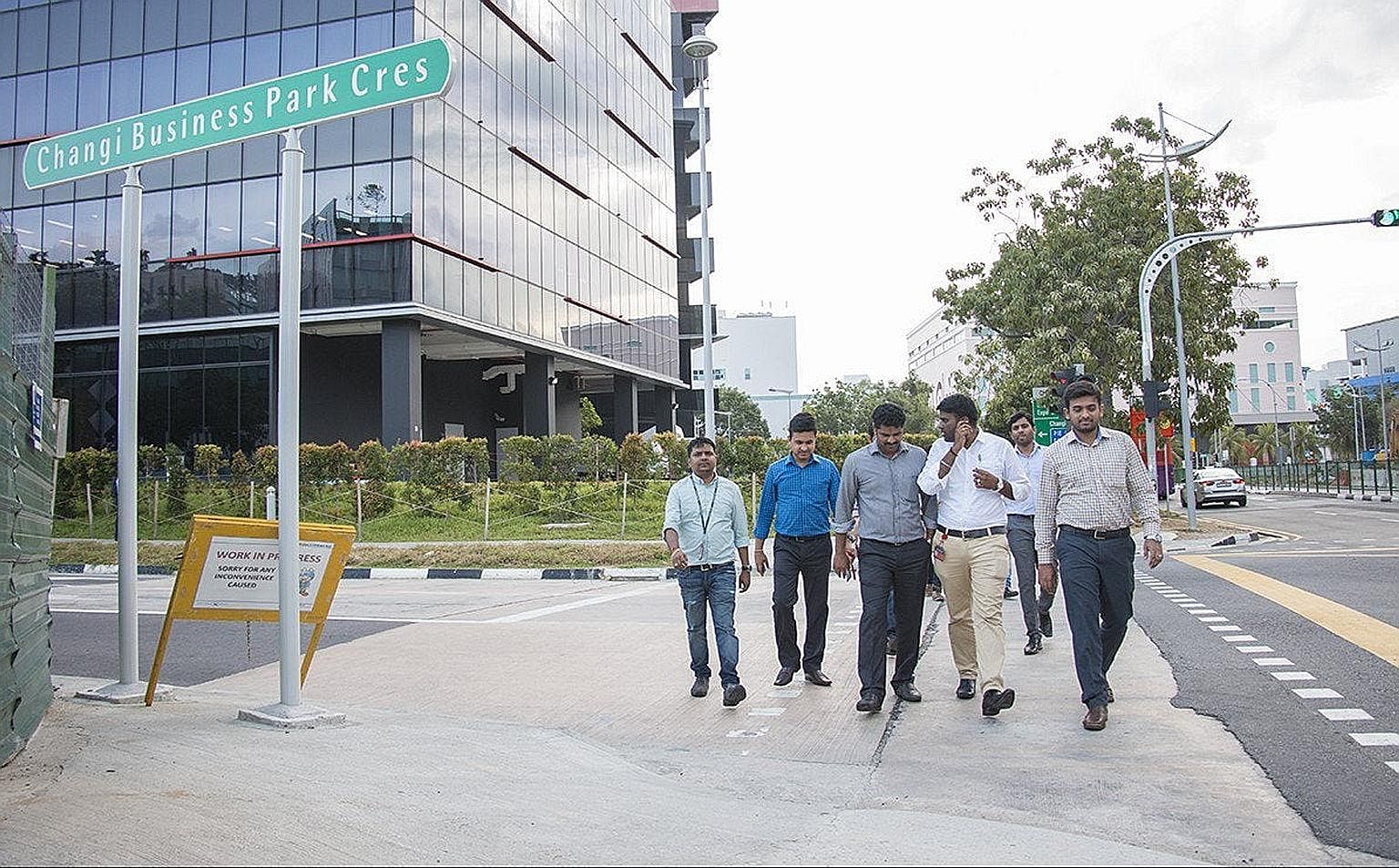ASAD LATIF
Changi Business Park has attracted an unfair share of the anti-foreigner sentiment that has come to the fore amid difficult economic times. It has been called Changalore (Changi plus Bangalore) and Chennai Business Park in a sly dig at the number of Indian nationals who work there and the eateries and pubs that exist to cater to the expatriate clientele. At the same time, Changi Business Park plays a key role in Singapore's status as a reputable financial centre and an IT hub for start-ups.
So, to critics, the park looks like an economic enclave of foreign talent which is predominantly Indian but, to others, it embodies the need for a tiny island city-state to draw in global expertise needed by growth industries in particular so that international companies base themselves in Singapore and help it to stay competitive.
In order to see for myself whether the park lies in India metaphorically, I visited it on a recent workday evening. There were few people on the streets; clearly, many employees were working from home. A few workers had come out of their offices for coffee, a smoke and a chat. I saw five Singaporeans, whom I could tell from their accent, three Indians and two Filipinos huddled around a smoking space.
True, those figures might not be indicative of the demography of the park's population. So, I looked around me. I did see Tata Consultancy Services occupy architectural pride of place, but that place was shared by DBS, IBM, Citi, Standard Chartered, Credit Suisse and other iconic global corporations whose presence contours the park's economic landscape.
The park exists in Singapore, I assured myself, and not in Chennai or Changalore.
Changi Business Park entered the unwanted limelight when it was singled out for indictment as the embodiment of the Singapore-India Comprehensive Economic Cooperation Agreement (Ceca). Dating to 2005, Ceca covers tariff reduction/elimination for 82 per cent of Singapore's exports to India. An upgraded Ceca reduces or eliminates tariffs for an additional 30 products.
The agreement also safeguards market access and ensures a more predictable operating environment for service suppliers. Clearly, the pact benefits Singapore business by enhancing its reach into the Indian market. The Indian government's recent approval of the merger of Lakshmi Vilas Bank with the Indian unit of DBS is a good example of that reach.
But there is a quid pro quo: The entry of Indians to Singapore. Critics have argued that Ceca has enabled sizeable numbers of Indian IT workers to move here as intra-corporate transferees because the agreement avowedly does not set any quotas for them. The park has attracted online vitriol because Singaporeans allegedly were sidestepped by Indian IT companies that set up offices there.
When, according to the critics, Singapore clamped down on the number of Indian professionals employed here some years ago because unemployed local professionals, managers, executives and technicians (PMETs) complained of discriminatory hiring practices, the Indian government said that Singapore's move violated Ceca. In the decade since 2005, however, the damage had been done, critics of Ceca argued.
The pact had created an inflow of Indian professionals that allegedly drove displaced Singaporeans to become cabbies, according to one accusatory online media article.
The truth is rather less dramatic. As Trade and Industry Minister Chan Chun Sing has clarified, Ceca does not oblige Singapore to grant employment passes (EPs) automatically to Indian nationals. Like all other foreigners, they must meet prevailing EP criteria. As for intra-corporate transferees, they must meet EP criteria, possess industry experience and have worked in the parent company for a minimum period. Indeed, Singapore's Ceca commitments are not unique but are on a par with most members of the World Trade Organisation that have made commitments on the entry of such transferees.
However, critics might persist in asking why there should be so many Indians in some companies, a concentration of which Changi Business Park is said to be emblematic. The reason: Fast-growing sectors such as info-communications and technology, professional services and financial services need more workers than Singapore can provide by itself. It is not that Singapore does not possess quality: It does not possess quantity. Yet, quality alone will not do: Critical mass requires quality in quantity.
That is where skilled foreigners enter the national economic landscape. They supplement the local workforce, not displace it. True, their presence appears overwhelming when they arrive in noticeable numbers in a certain industry or at a certain location. They seem to have occupied a part of Singapore. However, what they do is to create global economic space for Singaporeans who, as they compete with foreigners and succeed in industries that form the vanguard of the economy, gradually rise to higher positions in sunrise companies.
As more Singaporeans are educated and trained to fill positions in such industries, there is less need for foreigners eventually. Ultimately, it is locals who win. But stop the inflow of foreigners at the beginning, and the local story will be different at the end.
Changi Business Park does no more than replicate a business strategy that Singapore has pursued since Independence. It invited multinational companies (MNCs) to set up shop here. They employed Singaporeans and transferred technology in the course of time, but top management largely was foreign to begin with. Yet, precisely because foreign-led MNCs created opportunities for Singapore, Singaporeans rose to the top over time.
Today, Singaporeans are a part of global talent themselves. MNCs helped to get them there by testing them locally. To say this is not to denigrate the role of Government-Linked Companies (GLCs) and Small and Medium Enterprises (SMEs) in the economic development of Singapore.
GLCs ensured that the reins of the economy remained in national hands, while SMEs employed vast swathes of the population. However, MNCs helped to internationalise the economy. Without that internationalisation, Singapore would have been a dead duck in the waters of globalisation today.
I walked back from Changi Business Park to the Expo MRT station. Both are examples of globalisation. Both are witness to the flowering, not of Changalore but of Singapore.
Asad Latif is an editorial writer for The Sunday Times.



